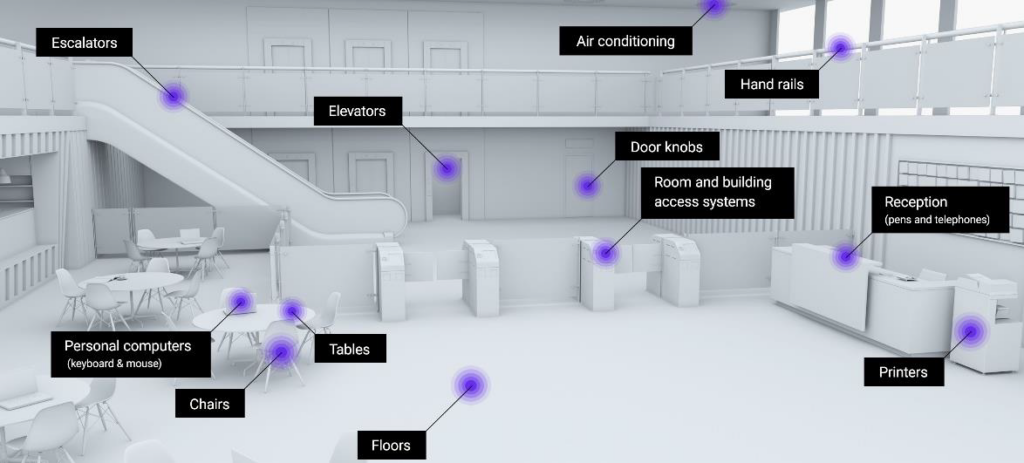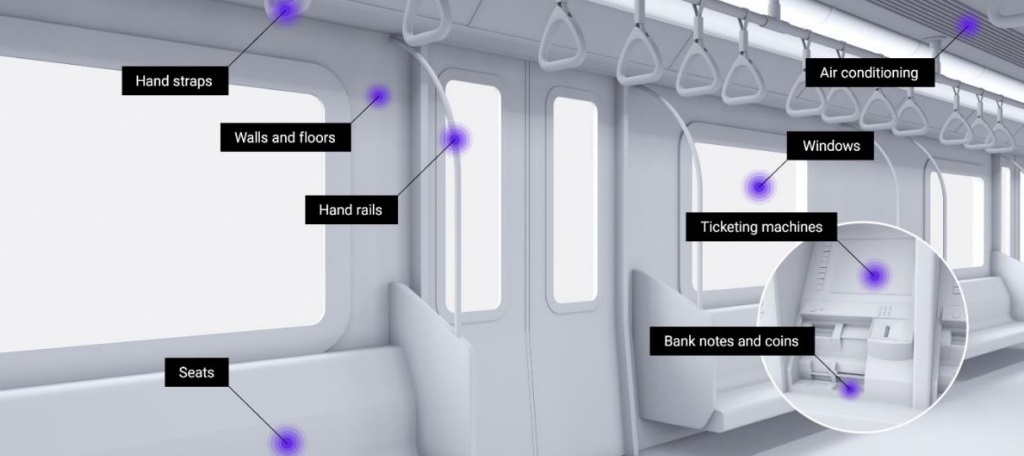
James Prietzel, Product Manager at Intelligent LED Solutions (ILS)
James is the ILS Product Manager for everything related to LEDs and has been with ILS since 2012. James is dedicated to understanding the latest technologies and innovations from leading suppliers in the OptoElectronics world, from optics, to LEDs and to Intelligent LED Drivers.
If the coronavirus pandemic taught us anything, it is that bacteria is everywhere. Every day, we are constantly at risk of contact with bacterial and viral infection. This risk is particularly prevalent when passing through places that have a lot of foot fall such as public transport, offices, and supermarkets.
This is why UVC disinfection is increasingly popular and becoming more widely used. It is no longer solely used in large-scale industrial and medical settings. It is becoming part of our daily lives.
| Types | Typical Examples |
| Viruses | Coronavirus, influenza virus, norovirus |
| Bacteria | E. coli, legionella, and salmonella |
| Fungus | Black mould, white mould, trichophyton |
| Protozoa | Cryptosporidium, giardia |
Bacteria and viruses indoors
Much of our usual day is spent indoors, whether that be at work or at home. Within public spaces like offices, shops or hospitals, the risk of encountering bacteria is high. We frequently encounter bacteria and viruses as they multiply on surfaces such as supermarket merchandise, elevator buttons, escalator belts, tables, chairs, and even droplet infection during conversation.

Manual chemical cleaning in these spaces is time consuming and prone to human error. Consequently, some hospitals and other public spaces already use UVC via autonomous UVC steralisation robots. Such innovative devices can disinfect large or small spaces more effectively than manual cleaning. The UVC radiation emitted targets and destroys harmful microorganisisms, with more consistent and accurate coverage than manual cleaning.
Bacteria and viruses in the home
Even at home, bacteria and viruses are ever present. Risk of infection and transmission is greater when rooms are limited in size and poorly ventilated. Commonly touched surfaces such as doorknobs, toilet flushes, taps, TV controls and light switches can harbour bacteria and viruses. Therefore, using UVC disinfection to neutralise these harmful microorganisms in our homes, can provide peace of mind.

UVC technology is used in smaller handheld devices that directly irradiate and sterilise surfaces. Such devices have been designed for easy everyday use. One key benefit of using UVC radiation to disinfect in the home is the reduced use of toxic or harsh chemicals which are commonly found in household cleaning products. UVC radiation is certainly more environmentally friendly way of eliminating 99.99% bacteria, with immediate effect upon exposure. Therefore, it is ideal and convenient for home usage.
Bacteria and viruses on public transportation
Vast numbers of people pass through public transport every day. Particularly during popular commuting hours, when buses and trains will fill with individuals heading to and from work. Risks of bacteria transmission in these settings are high, not only from droplet infection but also from physical surfaces. Whether on a train, plane, bus or car we touch many different surfaces including handrails, ticket machines, entry barriers, and handles. This is why it is necessary to take measures to reduce the spread of bacteria and viruses.

Limited air circulation in aeroplanes and underground trains have the perfect conditions to breed and transmit airborne pathogens. UVC air purification is another growing application which helps to combat this problem. It is often used on planes and trains to effectively eliminate airborne viruses and bacteria.
Air is circulated through air filters, where is subjected to UVC radiation emitted from LEDs. This process destroys harmful microorganisms carried by the air and has a 99.99% effectiveness rate. UVC LEDs can be implemented within larger systems for use indoors, as well as compact systems for small spaces and inside vehicles.

ILS UVC LED modules
ILS offer three different primary lens options (60°, 90° or 130°) which control light distribution over the target area. ILS’s wide range of UVB & UVC LED solutions are built using UV LEDs from TSLC, Stanley and OSRAM. The variety of module sizes, wavelengths and powers allows users to select their most optimal wavelength range. These options also give designers more flexibility to meet the power requirements for obtaining the desired level of disinfection.










